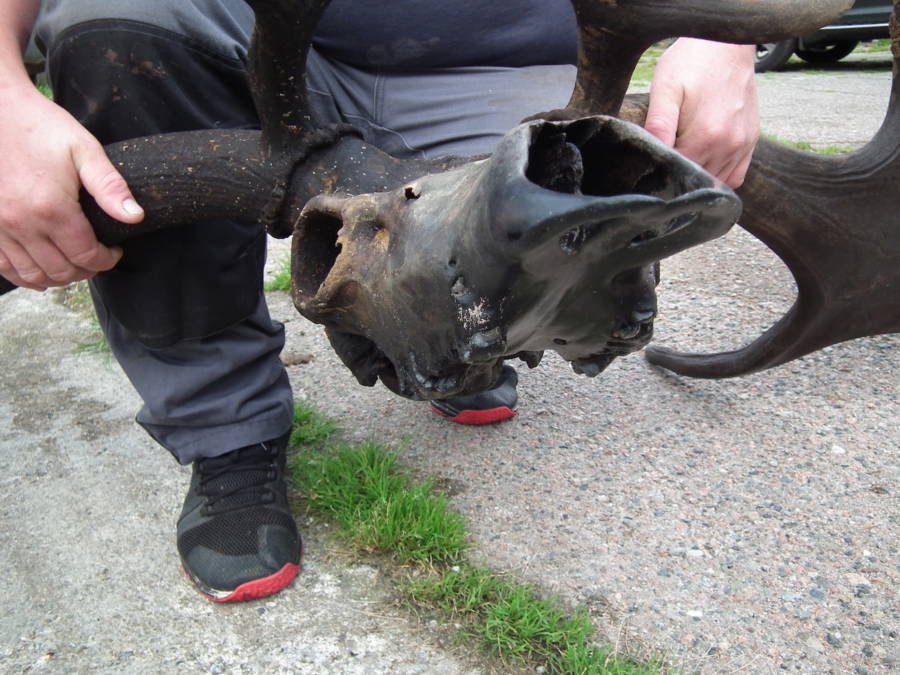Though the ancient species were not exclusively found in Ireland, most of the remains of the Irish Elk have been found in the country than in any other part of the world.

Fishermen Raymond McElroy and Charlie Coyle were out on the lake bed of Lough Neagh in Northern Ireland when they found that they had caught no fish, but their net was still straining.
It took the two of them all their strength to lift the net from the bottom of Lough Neagh. Assuming by the weight they thought their net had snagged on an old piece of a dead tree at the bottom of the lake.
Raymond and Charlie were shocked when they took it out of the water – it was a massive pair of elk antlers with the skull almost fully intact. Now extinct, the Giant Irish Elk (Megaloceros giganteus) stood more than two meters tall and had antlers of up to four meters in diameter.
Turns out Raymond and Charlie’s catch was not only unexpected but historic as well, as the ancient skull dates back more than 10,500 years.”It came up in the net on the side of the boat. I thought it was a bit of black oak, to begin with.” Raymond said.

“I thought it was the devil himself. I was going to throw it back in. I didn’t know what to do with it.” Coyle told The Irish Times.
They are named Irish Elk because of the fact that the remains of these creatures are more commonly found in the lakes and bogs of Ireland than in other parts of the world.
The name “Irish Elk” is misleading as these creatures are technically categorized as deer and not exclusively found in Ireland, but in Europe, Asia and Africa when they were still alive.
According to Mike Simms, a paleontologist at the Ulster Museum in Belfast these deer were once able to live in the Irish Grass plains from about 17,000 years ago when the environment and weather suited them.
“They’ve been extinct since 10,500 to 11,000 years ago in Ireland… It’s the first really good one I have seen in 20 years” Mike Simms said in the interview with BelfastLive.
When forests began to grow, their antlers made it very difficult for them to navigate as easily as they did when they roamed the open plains. Simms said: “giant antlers aren’t great in the forest, and ultimately Environmental change is what caused their extinction.”
This isn’t the first case when the remains of Irish Elk were found in Lough Neagh. In 1987, a fisherman named Felix Conlon discovered a set of antlers attached to a skull, he later gave that to a local school to display.
Another instance of remains found was in 2014 when another fisherman named Martin Kelly found a lower jawbone from an Irish Elk at the same lake – the remains were estimated to be at least 14,000 years old – not far from the spot where Raymond and Charlie found their Irish Elk skull.
Raymond believes that the lower jawbone of the Elk might match with the Elk skull he just discovered, although experts haven’t confirmed the theory yet.










